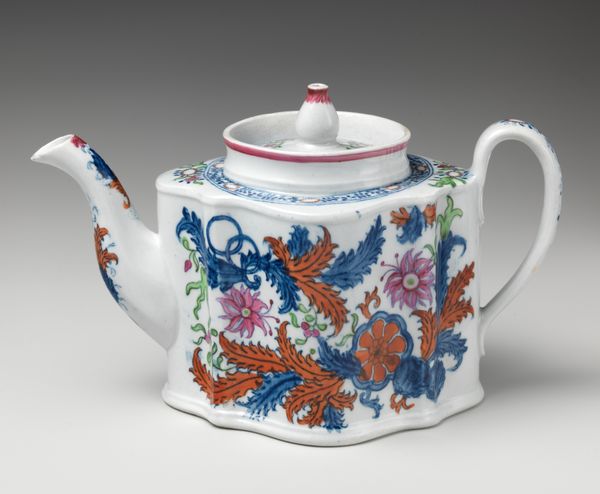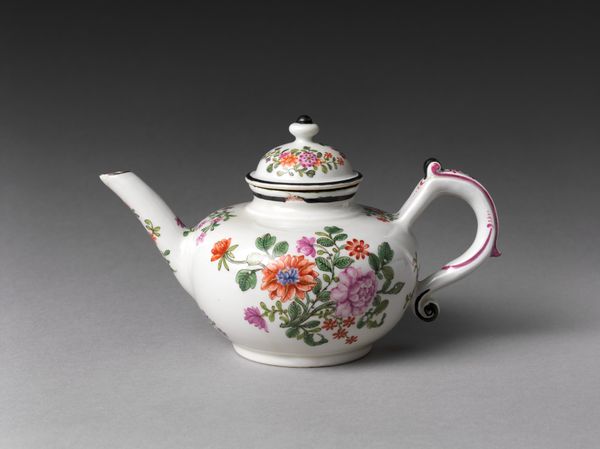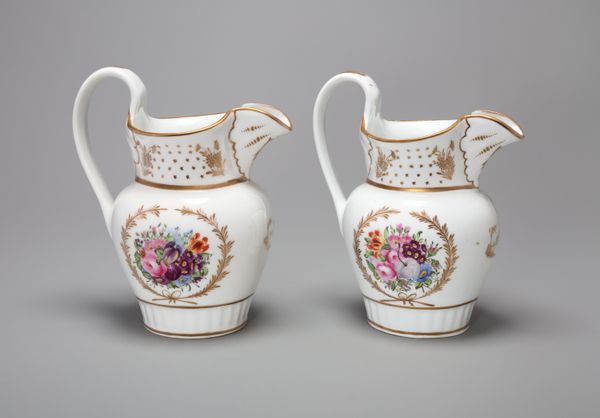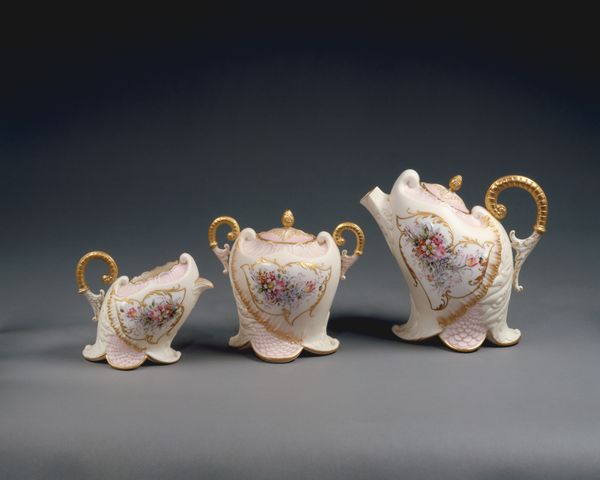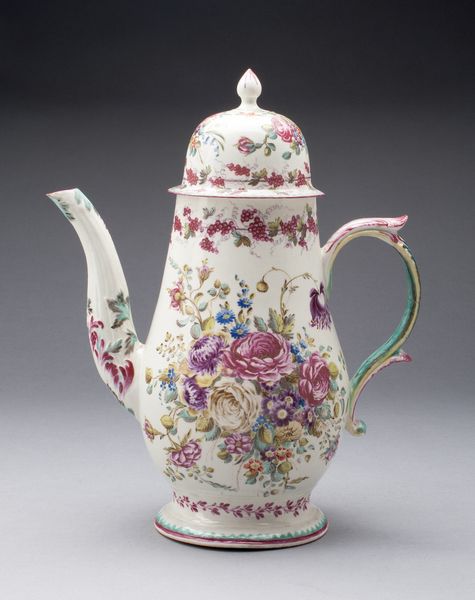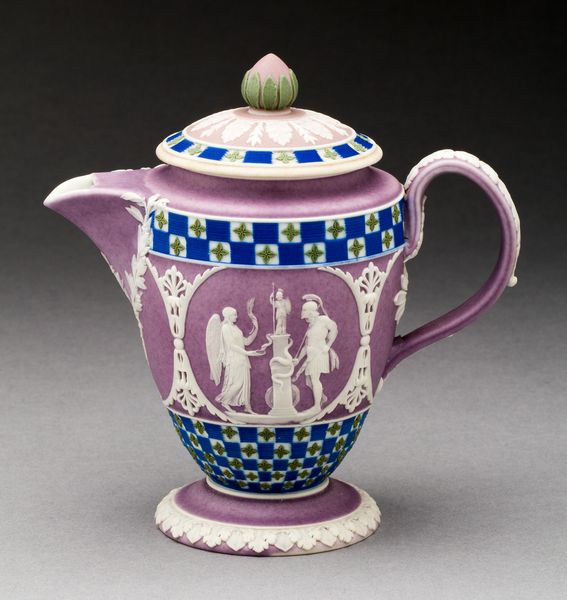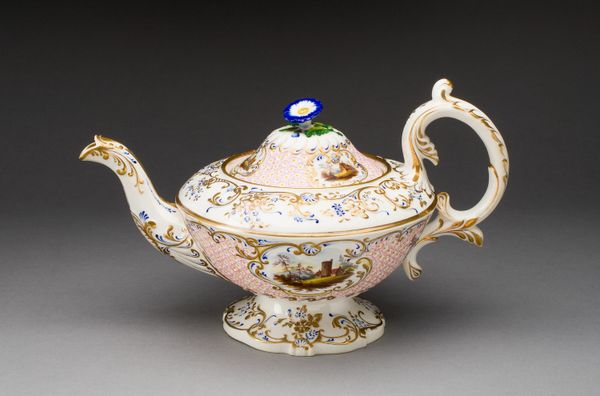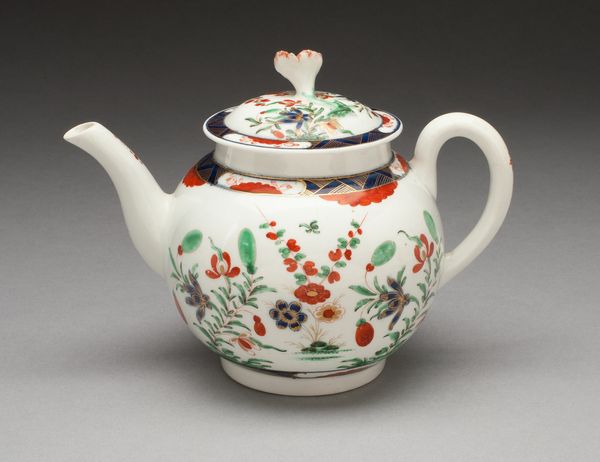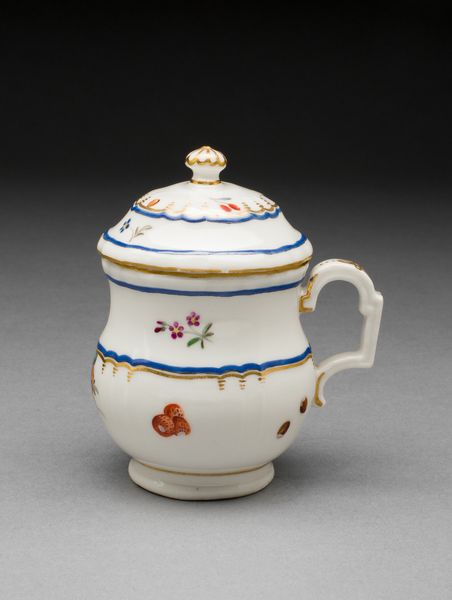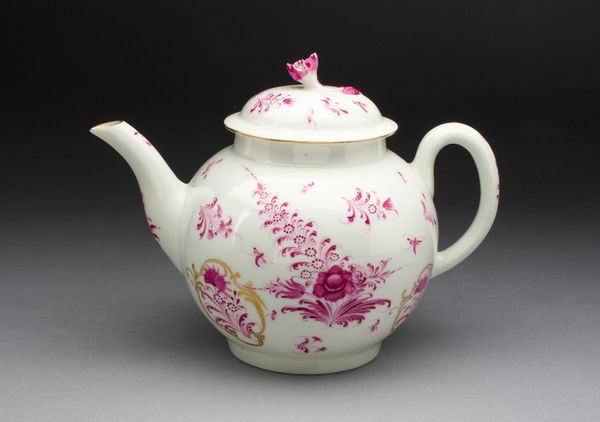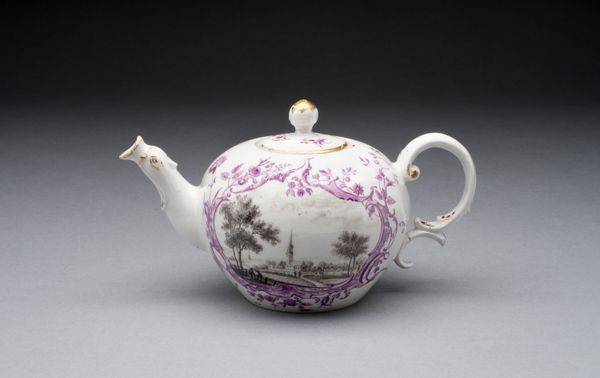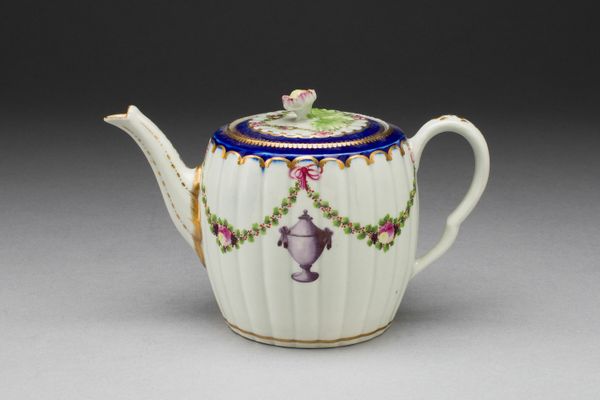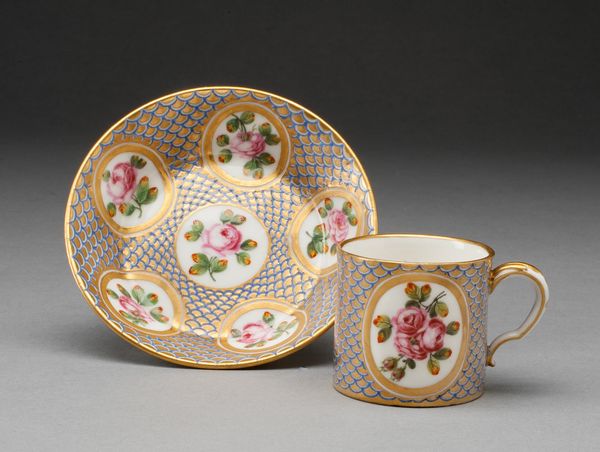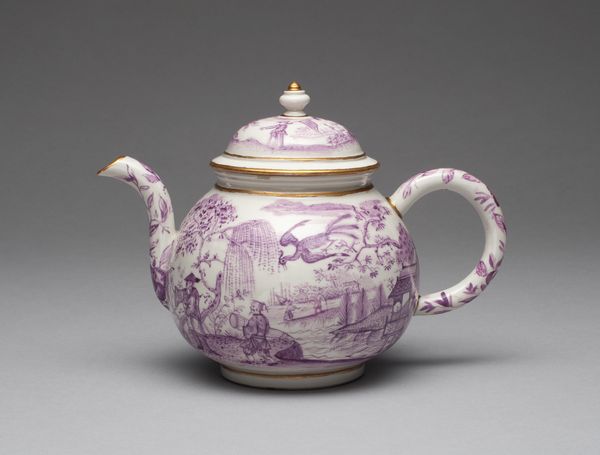
Hexagonal teapot or winepot (pair with 1975.1.1706) 1771 - 1800
0:00
0:00
ceramic, porcelain
#
asian-art
#
ceramic
#
porcelain
#
decorative-art
Dimensions: Height with lid 4 15/16 in. (12.7 cm.)
Copyright: Public Domain
Editor: So here we have a pair of hexagonal teapots or winepots. They're attributed to China, and were crafted sometime between 1771 and 1800. Porcelain's the primary medium. What I immediately notice is the incredibly detailed and delicate ornamentation, all the little perforations. How does their creation speak to you? Curator: I see the teapots as embodiments of complex labor relations. Think about the specialized skills required to produce these incredibly refined objects. The porcelain itself, a highly controlled material, had to be sourced, processed, shaped, fired – each step demanding expertise. How do you think this contrasts with, say, more utilitarian pottery of the same period? Editor: Well, I imagine there's a huge gap in accessibility and intended use. These don't seem made for everyday use, they feel far more like showpieces for a wealthy elite. Curator: Exactly. These teapots exemplify conspicuous consumption. The detailed floral patterns, the hexagonal form, the very delicate perforations... all necessitate tremendous artisanal skill, pointing to the economic disparities present in Qing Dynasty China. What do you read into the floral designs themselves? Editor: It's almost like a garden compressed onto these small surfaces, incredibly controlled. But is it specifically that control over nature being expressed, through craft and expensive materials? Curator: Possibly, and it certainly highlights an imperial control over resources and labor. These teapots weren’t simply objects; they represented the pinnacle of Chinese craftsmanship made available, maybe exclusively, to the privileged class. Their production was intertwined with both aesthetic ideals and social stratification. Editor: I see what you mean. Looking at these as evidence of labor and economic forces, rather than simply beautiful objects, gives them a whole new layer of significance. It’s fascinating to consider. Curator: Precisely. It really reframes how we appreciate both the artistic and the political aspects.
Comments
No comments
Be the first to comment and join the conversation on the ultimate creative platform.
